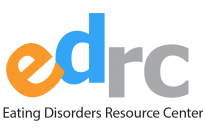Research indicates that around 95% of eating disorders begin between the ages of 12 and 25. That means it’s especially important for parents, teachers, and other trusted adults to know how to identify eating disorders in this population.
How to Identify Eating Disorders in Young People
Learning these red flags can help you spot a problem before it gets bigger.
Signs of eating disorders in young people

Physical signs
- Weight loss, or failing to gain height or weight according to growth curve
- Fainting, lightheadedness, or weakness
- Digestive problems
- Feeling cold all the time
- Poor immune function (getting sick frequently)
Emotional, social, and mood-related signs
- Mood changes, including but not limited to anxiety, depression, irritability, or hyperactivity
- Social withdrawal
- Flat affect or absence of emotion
- Difficulty concentrating
- Losing interest in things they used to enjoy
Food-related signs
- Starting a new diet or setting new rules around what they “can” and “can’t” eat
- Avoiding certain foods or food groups
- Preferring to eat alone, avoiding family meals or meals with friends
- Fixation on food’s nutritional or caloric content
- Being inflexible about what, when, where, or how they eat
- A history of picky eating that gets worse over time
- Mealtime rituals or strange behaviors (like always eating things in a certain order, cutting things a certain way, eating very slowly)
Movement-related signs
- Exercising intensely and without joy
- Adopting a rigid exercise routine that they prioritize above other obligations or activities
- Exercising even when sick or injured, or in poor weather
- Expressing a need to exercise to “make up for” food eaten
Eating disorders in children
While we often think about eating disorders affecting teens and young adults, the reality is that eating disorders affect young kids, too. Children as young as four have been diagnosed with eating disorders, and research shows that eating disorders are skewing younger. Young children with eating disorders are less likely to have body image distress and a fear of being fat than their older counterparts, and instead of weight loss, children usually present with lack of expected height growth or weight gain.
Though children could be affected by any eating disorder, the most common eating disorder in very young children is avoidant/restrictive food intake disorder, or ARFID. Learn more about ARFID here.

Eating disorders in teens
The teenage years are a common time for eating disorders to develop: the median age of onset for anorexia, bulimia, and OSFED is around 17 years old. There’s never one single “cause” of an eating disorder, but this stage of life presents several distinct risk factors, including hormonal changes, social stressors, and the prominent role of social media. While eating disorders can affect any teen, research shows that LGBTQ+ teens and teen athletes have a heightened risk.
Eating disorders in teens can be particularly tricky to identify, because some of the potential signs—like moodiness, withdrawal, and a focus on appearance—are also natural parts of teenagehood. That makes knowing the symptoms and red flags of eating disorders even more important.

Eating disorders in young adults
Young adulthood is a time of transition, and this can set the stage for the development of an eating disorder in vulnerable people. The transition to college can be particularly challenging for a variety of reasons, including a sudden increase in independence, overwhelming and new food options, challenging social dynamics, academic stress, and body comparison with peers, among other factors. Learn ways to make the college transition easier and protect against an eating disorder.


Equip: helping young people with eating disorders
Eating disorders are serious and potentially life-threatening illnesses, but they aren’t a life sentence: with the right treatment, every person affected by an eating disorder can achieve lasting recovery. For young people with an eating disorder, early intervention is key. The sooner you seek help, the easier the recovery journey will be.
Equip offers virtual, evidence-based eating disorder treatment that allows young people to recover at home, without pressing pause on life. It’s covered by insurance, has no waitlist, and it works. Reach out to schedule a free consultation and learn more about Equip treatment.

